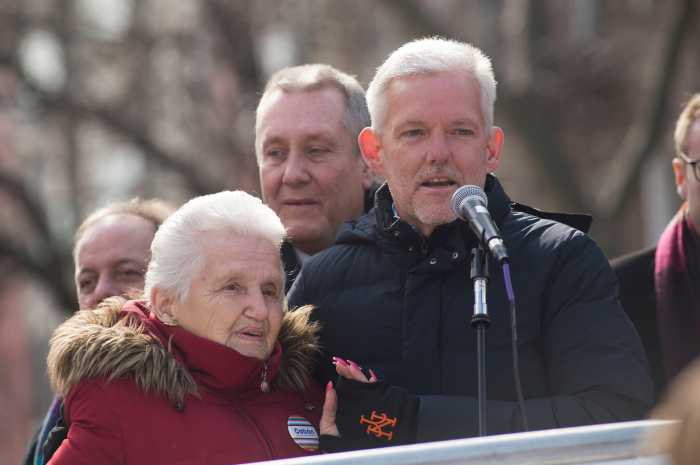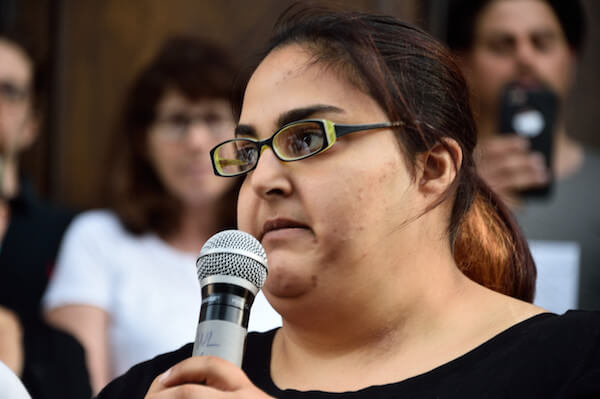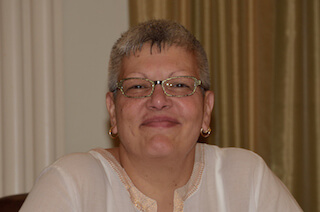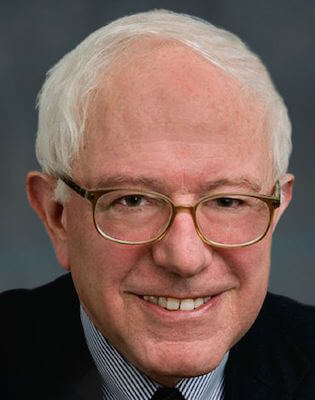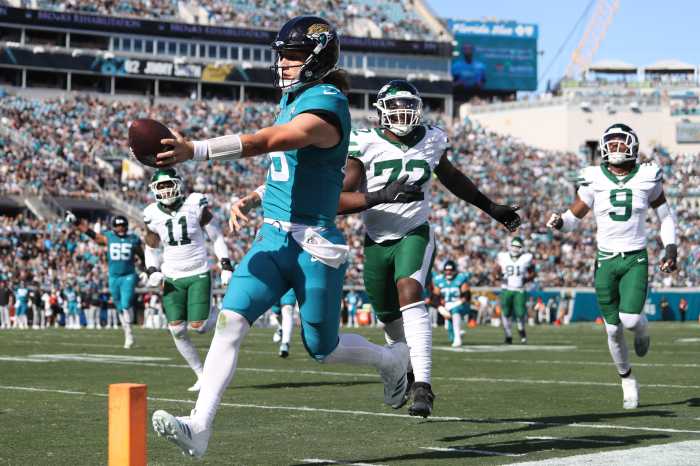Mr. Pam and passenger Rafael Alencar zip across Manhattan. | QUEER CITY
BY GARY M. KRAMER | Out filmmaker Draper Shreeve set out to capture the “spirit of queer life” in his fabulous documentary “Queer City,” now available on Flix Premiere as well as other streaming services. The film profiles a diverse range of LGBTQ New Yorkers, from Kris and Sarah, two lesbian parents in Brooklyn, to former State Senator Tom Duane, Mr. Pam, a gay porn director, Eric, a Haitian immigrant, and Tee, a Latina woman.
Draper Shreeve ferrets out resonant tales of a very queer city
“Queer City” showcases stories of LGBTQ life that aren’t featured in many films, and Shreeve’s intimacy with his subjects — showing Kris and Sarah having dinner with their kids, or Eric just taking a walk — make the film resonate. Viewers get a strong sense of the lives of these inhabitants of Queer City. The filmmaker spoke with Gay City News via Skype about making his inspiring documentary.
GARY M. KRAMER: How did you find the subjects for the film?
DRAPER SHREEVE: I have been taking yoga for about 15 years at the Gay Center on 13th Street, and going there twice a week, I’ve encountered a lot of different people. I was struck by the incredible diversity… I talked to 12 to 15 people for the film, and I wanted a certain mix. I know that if I chose people who didn’t interest me, how would they interest other people? I wanted a range of folks. To spend time with them and hear and report stories, you have to fall in love with all of them. They are not stars or celebrities. I started envisioning a canvas that had a really large stretch. So I had a former state senator, a janitor, and a porn director in the same film. They are all gay, and all New Yorkers.
GMK: Why did you take the approach you did to tell these stories, which is a mix of observational scenes and talking head interviews?
DS: Talking heads are interesting, it helps the subject focus and come up with things they wouldn’t say in a different context. But I think it’s revealing and interesting to see people in their natural environments and how they behave. I think you need that, and I went to a lot of trouble to get that.
GMK: How did you get the subjects to trust you to tell their stories?
DS: To get people to open up, you have to put in the time. They knew I was passionate about making this film. We did multiple interview sessions, and the further we got into it, the more they opened up.
GMK: What did your subjects reveal that intrigued or surprised you as you made the film?
DS: When you make a movie like this, you have an idea what you’re going to get, but you don’t really know. With all of these people, there were surprises along the way. When I explained the project to Tee, she was up for it. She was fabulous on camera. She said things that really blew me away. She was talking about her love life — and she’s very forthcoming about that — and she did time and was a heroin addict. But at the end of the interview, she shifted into a lower, quieter gear.
The lesbian couple in Brooklyn, their kids were very articulate and bright, and they surprised me with their observations about their mothers. Geoffrey, the 81 year-old British man in the film, talks about going to the Everard Baths in the 1960s…. All of them were surprising.
GMK: What stories did the subjects recount that hooked you?
DS: Mr. Pam is one of the most evolved people I’ve ever met. She’s incredibly open about her sexuality. We called her “Pam-sexual.” She is passionate, and very intelligent, and cognizant of her work. She knows that people are addicted to porn, and she acknowledges that, but says she does her work not to cause trouble, but to give pleasure.
Geoffrey is also very community-oriented. He says how important it is for the gay community to do more for the elderly. It’s a demographic that is neglected. He’s also very much an advocate for gay youth. There is a large percentage of runaway LGBT kids because of religion and parents who have thrown them out. They escape for their lives because their parents and family will do them harm because they are gay. Many end up in New York without ways to support themselves. They hustle and become drug addicts. Geoffrey makes people aware of both extremes of the LGBTQ population. Each end of the spectrum is neglected.
Tom talks about being mugged in the parking lot of a gay bar. When did you ever hear a senator say something like that?
GMK: What can you say about shooting on location in New York City?
DS: The technology has changed so much it made making a film like this possible and shooting in New York a lot easier than it was years ago. The equipment is so light and portable. Officials in New York are very savvy about people shooting on the street here, and more and more they are asking for permits. The cops were pretty cool. I would just pick up a camera and go down into the subway and shoot. When the cops played rough and stopped me and said I needed a permit, I played dumb. It was essentially a no-budget movie we cobbled together over a number of years. The whole film from start to finish was about four years.
GMK: If you turned the camera on yourself, what would your life look like?
DS: I’m probably not as interesting as these people. I think the audience would say, “That guy works a lot!” Watching someone work and watch movies and eat all the time, it’s interesting for me, but I’m not sure it would be interesting to audiences. That’s why I chose people who had more colorful lives.
QUEER CITY | Directed by Draper Shreeve | Streaming at flixpremiere.com



